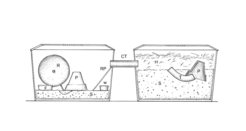Impacts of tagging and captivity on behavior

Whenever we study animals we affect them. This will not only influence results, but also has ethical implications. Torpor use by bats, performance in cognitive tasks of shrews adding a tag to an animal all can profoundly change due to our influence. While we believe that we can learn from this and use it to test hypotheses it is important to know and quantify these effects. In particular, we always have to ensure we do not cross ethical boundaries. Surprisingly, there is barely any literature on the effect research has on the behavior and performance of animals and we have made it our mission to study and publish this at least where our own animals and research activities are concerned. Currently, there are three main topics where we pursue this: 1) energetics - both shrews and bats have very different energy usage profiles under natural conditions compared to the lab giving us important information about capacity vs. actual used strategies. 2) captivity effects - mostly in our shrews we find changes at almost all levels, from gene expression and seasonal size change to changes in motivation and activity even when kept at natural light and temperature. 3) tagging - in almost all our projects we track animals. That this will have effects due to added weight, shape or attachment method is intuitive, however, studies assessing this are extremely rare. We are currently examining the impact of tag weight on flight kinematics in bats. Using the 0.35 g fleatag combined with a housing in which we can flexibly vary the weight of the tag, we can record detailed acceleration from a range of bat species in captivity. This work aims to update the 5% rule and provide a more detailed assessment of how tag weight impacts bats and provide tools for researchers to continue to assess the impacts that tagging has on bats.
